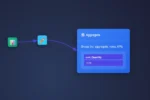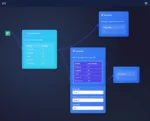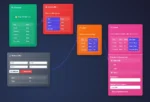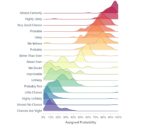In today’s world of real-time data streams and cloud-native architectures, uninterrupted velocity is the ambition—but not the reality. For modern businesses, a single bottleneck in your event pipeline can cascade downstream, delaying insights and disrupting operations. At Dev3lop, where data, analytics, and innovation intersect, we’ve seen how smart flow control—particularly backpressure-aware approaches—can turn potential breakdowns into resilient systems primed for growth. Imagine an event pipeline that doesn’t just survive high loads but adapts, protecting your revenue-critical analytics and machine learning workflows. Let’s explore, with a strategic lens, why backpressure-aware flow control is essential, how it works, and what it means for your organization’s future.
Understanding Backpressure in Modern Event Pipelines
As organizations embark on ever-more complex event-driven architectures, processing volumes scale, and with them, the risk of overwhelming components. Backpressure is the self-protective signal: when a consumer node is saturated, it communicates the distress upstream, urging producers to slow down or buffer. Sound flow control isn’t optional in this landscape—it’s foundational. Without it, your carefully engineered streaming flows devolve into chaos or data loss. Technologies such as Kafka, Apache Flink, and modern orchestration tools recognize this non-negotiable reality, building in mechanisms to handle fluctuations in demand and throughput.
One essential tactic is integrating complex event processing to detect bottleneck patterns before they escalate. Backpressure-aware design helps maintain low latency and system integrity, especially in environments pushing real-time analytics or machine learning pipelines. For those evaluating the right platform fit, our comparison of BigQuery, Redshift, and Snowflake outlines why native backpressure support increasingly differentiates leading cloud data warehousing solutions.
Strategic Benefits of Backpressure-Aware Flow Control
Instituting backpressure-aware pipelines isn’t just damage control—it’s a driver for operational excellence. When event sources, brokers, and sinks are all ‘in the know’ regarding capacity, congestion is avoided, and fewer resources are lost to spinning wheels or overwrites. This precision flow also boosts the profitability of data engineering investments: less downtime means faster, more actionable insights. Notably, event integrity—whether it’s safeguarding customer transactions or tracking IoT sensor anomalies—surges when the flow is paced to the slowest consumer.
Moreover, with regulations tightening and compliance stakes rising, you can better orchestrate secure and observable data transformation flows. This controlled adaptability makes scaling up predictable and secure, earning trust from both regulators and your most valuable stakeholders. Data-driven decision makers can sleep easier knowing that backpressure-aware controls fortify both availability and security.
Implementing Backpressure: Building Blocks and Best Practices
To bring backpressure-awareness to life, start with instrumentation—metrics, tracing, and observability at each stage of the event pipeline. Modern systems, especially cloud-first offerings like Amazon Redshift consulting services, often expose hooks or APIs for shaping flow rates dynamically. Employ feedback channels; don’t rely on passive buffering alone. Adaptive throttling, circuit breakers, and priority queues all come into play for nimble, responsive operations.
Beyond technology, empower your teams with knowledge. Encourage engineers and architects to prepare by reviewing frameworks and essential data engineering questions to understand corner cases and operational realities. Regular fire drills and chaos engineering scenarios can expose hidden choke points. Don’t overlook the human element: in our client projects, cross-functional training—especially in networking with data science professionals—is key to fostering a proactive, resilient culture.
Future-Proofing Your Event Pipeline Strategy
Backpressure-aware flow control isn’t just today’s solution—it’s tomorrow’s imperative. As data streams entwine with AI, automation, and distributed cloud warehousing, dynamic regulatory shifts will compound operational expectations. Prepare by systematically optimizing for throughput, reliability, and compliant data handling. Invest in best practices like advanced market basket analysis to inform which pipeline links are most business-critical and where to invest in redundancy or extra monitoring.
Finally, reducing chart junk and maximizing the data-ink ratio in reporting dashboards ensures that event flow status and backpressure alerts are clear and actionable—not hidden in the noise. As you strategize for tomorrow’s innovations, keep one eye on the evolving data ethics and privacy standards. In an era defined by agility, the organizations that master flow control will lead the data-driven frontier.
Thank you for your support, follow DEV3LOPCOM, LLC on LinkedIn and YouTube.

























